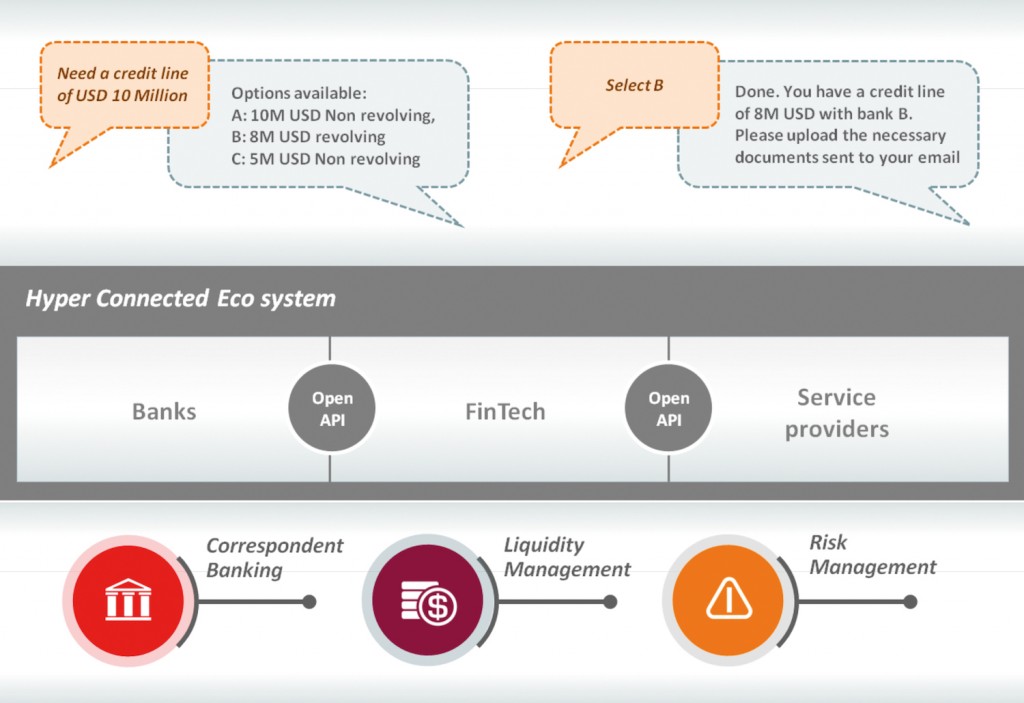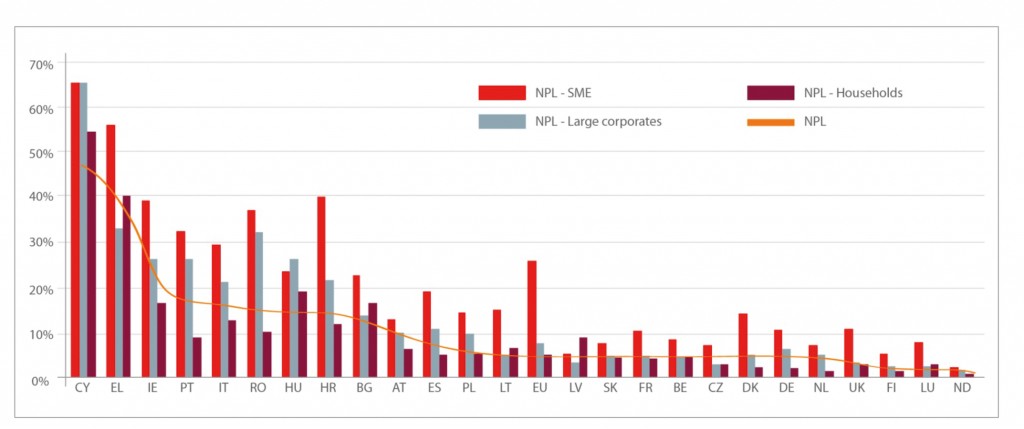Creating a hyperconnected corporate bank of the future
Banks are not competing with banks anymore, but against the ubiquitous, all pervading unified digital experience, which is driving the adoption of digital across the corporate banking value chain. Fintechs are a great example of how innovations in digital can deliver speed to market, a superior customer experience and better pricing.
In fact, there was a spike in the number of fintechs from 2011 to 2015, showing how much easier it is to get to market with a flexible, digitally-based infrastructure. 47% of fintechs set up in 2015 offered B2B services compared to 34% of fintechs set up in 2011, according to McKinsey.
Comparatively, the strength of traditional banks lay in their rich customer data, built across years of trust and relationships. A strong, powerful strategy lies in the alliance of the technological prowess of the fintechs complemented by the rich customer data of the banks, to provide the best banking experience to customers.
Enter the world of a hyperconnected bank. The hyperconnected corporate bank of the future will leverage technology such as Open API interfaces to enable an entire ecosystem of financial institutions, Fintechs and service providers to deliver the most complete set of offerings to customers. A middle services tier will present the bouquet of services rendered by this hyperconnected ecosystem, as shown in Figure 1 below. A digital experience tier will leverage analytics to glean customer insights, and exploit product processors, to deliver the best-fit customized services, based on customer requests. It could be as simple as a chat message, once the security credentials are established.
There are a number of aspects that need to be examined when considering the hyperconnected bank of the future. Cross-border corporate payments, for example, remain a complex and imperfect exercise. Different payment systems limit interoperability, enforce dependence on several intermediaries, and add costs with delays to settlement.
There isn’t a “one size fits all” solution for cross-border payments. However, when technology underpinning a bank’s payment system is modernized and its structural inefficiencies removed, and when banks open up to connect with other banks and service providers they can facilitate faster fund transfers and perhaps even instant payments. According to a research by McKinsey, disruption in the payments landscape is slowly moving from C2C to B2B, where banks get nearly 95% of that B2B cross-border payment revenue. Non-bank players and fintechs are eager to take advantage of inefficiencies that exist today in the B2B cross-border payment ecosystem.
It is estimated that if cross-border payment efficiencies were to even match those of domestic payment efficiencies, it would cost the industry about $150 billion in cross-border payment revenues. Transaction costs for a cross-border service provider will be much less, compared to a bank, as it would not have to carry the cost of legacy infrastructure. Banks can partner such cross-border service providers and give the services to customers at a lower cost.
Liquidity management is another area that could gain immensely by leveraging the hyperconnected ecosystem. Hyper connectivity would allow banks and institutions to exchange information transparently and efficiently. It reduces financial risks and allows managing corporate supply chains intelligently. By building on an open ecosystem strategy, institutions can converse through global standards and protocols, allowing seamless information flow.
A treasury department can gain cash forecast information from different sources by connecting through the interfaces without deploying expensive integration software solutions. For corporate cash management units, open environment interfaces can be used to build applications that extract data from the extended financial supply chains for decision making. Hyper connectivity allows corporations multiple source points that are needed for the management of liquidity positions. As the corporations expand globally the supply chain complexities will magnify wherein information disseminates from disconnected and disparate sources. Hyper connectivity will be the need and not the alternative.
Risk management remains central to the corporate banking marketplace, by virtue of the individual deal size. Hyperconnected ecosystems will enable banks to assess transaction patterns across banks and financial institutions to create a risk profile, not limited to a single bank. In a hyperconnected ecosystem, encumbered assets could be easily validated from the market place, thereby minimizing future risk of exposure due to potential unsecured lending. The advantages accrued from leveraging a hyperconnected ecosystem to manage NPLs can be judged by the fact that, as of September 2015, the average rate of non-performing loans in the EU was at 5.9% (Economic Governance Support Unit, European Parliament, March 2016).
Achieving success in a hyperconnected scenario depends on how banks adapt their existing IT infrastructure. It is essential for banks to realign their IT strategy to deliver capabilities of an exceptional digital experience (A Digital Experience Tier), enhanced digital engagement (A Digital Engagement Tier) and a responsive back-end (A Product Processor Tier). Also, the IT strategy must allow for standalone deployment of key components to focus on areas of strategic importance to the bank. Combining the power of analytics and big data, banks can gain a deep customer insight to create a contextual digital engagement. Collectively, by leveraging RESTful services and Open APIs, banks can create a hyperconnected corporate banking experience.
By Oracle Financial Services













































